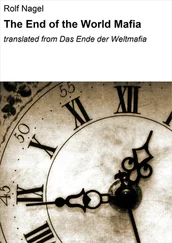Once John left the war-torn and bloodstained Jewish homeland, or so we might speculate, he made his way to the Roman province known as “Asia”—that is, an area of Asia Minor that is largely contained in what is now modern Turkey. From the vantage of the imperial capital at Rome, the province of Asia was only a backwater, full of unsophisticated and untutored yokels, but the cities that John visited were lively places where the local gentry aspired to make themselves over in the image of Roman civilization. And John, as we shall see, was as deeply troubled by the Roman way of life as he was by Roman imperialism or the religious practices of classical paganism.
John himself tells the reader that he was on “the isle that is called Patmos” when he was granted the strange and shattering visions that are described in the book of Revelation. Patmos is one of the so-called Dodecanese, a cluster of twelve Greek islands in the Aegean Sea, located along the southwestern coast of Asia Minor. Only eleven square miles in area, Patmos is a harsh and hilly volcanic island rising to about a thousand feet. And so it was proposed in the fourth century by Victorinus, author of the earliest commentary on Revelation to survive intact, that John had been sentenced to a term of hard labor on Patmos—“condemned to the mines by Caesar Domitian”—and released on the death of the emperor who sent him there. Like so much else in Revelation, the grain of speculation grew by accretion over the centuries: Austin Farrer, writing in the aftermath of World War II, provocatively refers to John’s place of confinement as “the concentration-camp at Patmos.” 43
John himself is not entirely clear on the question of how or why he came to Patmos. Some translations suggest that he was on Patmos “ for the word of God and the testimony of Jesus Christ”—that is, for the purpose of preaching the Gospel to any Jews or pagans who might be willing to listen. Other translations, however, render the same passage to suggest that he had been exiled to Patmos “ on account of the word of God and the testimony of Jesus Christ”—that is, as punishment for his missionary work, which is the meaning favored by modern scholars. 44Indeed, the New Living Translation, the work of contemporary evangelical scholars, takes the liberty of adding an explanatory phrase that appears nowhere in the original Greek text of the New Testament: “I was exiled to the island of Patmos for preaching the word of God and speaking about Jesus.” 45
No ancient source other than Revelation itself suggests that the Romans used Patmos as a place of exile, although political prisoners were apparently banished to other nearby islands in the Dodecanese. Then, too, Adela Yarbro Collins wonders out loud whether any Christians would have been granted the relatively benign punishment of exile: “The odd thing about this hypothesis,” she asserts, “is that most condemned early Christians were executed, not deported.” 46Still, it is hardly plausible that John would have gone to Patmos merely to preach the Gospel, given the scanty number of souls that would have been available in such a small and remote island. John looked for—and found—a much more promising place to deliver his startling message about the end of the world.
John makes it clear that his missionary work was conducted not on the barren island of Patmos but in the bustling commercial centers of Asia Minor. The opening chapters of Revelation consist of a series of messages addressed by John to the Christian churches of seven cities in western Asia Minor—Ephesus, Smyrna, Pergamum, Thyatira, Sardis, Philadelphia, and Laodicea. These messages, or “letters” as they are often called, are the best evidence that John had spent enough time on the ground in these cities to gain an intimate knowledge of the politics and personalities of each place. Indeed, one of the keys to understanding the anger and resentment in the book of Revelation is the prickly relationship between John and the preachers, congregants, gentry, and provincial authorities, all of whom were far more comfortable than John himself with the good life that was available to the citizens of the Roman Empire, whether they were pagan, Christian, or Jewish.
Ephesus, for example, was a mercantile center that hummed with civic pride and ambition. The city lay at the mouth of a major river and at the junction of three busy roads, and thus it served as a hub for all of western Asia Minor. Designated as a “free” city by Rome, Ephesus was governed by an assembly of its own citizens—an ekklesia, the same Greek word that is used to identify a church—and never suffered the indignity of occupation by the Roman army. Still, it was one of the so-called assize towns where the Roman governor routinely stopped to hear and decide important legal cases, a fact that only added to its stature among the provincial towns and cities of the far-flung Roman Empire. For all of these reasons, Ephesus was “a city where men might look on the pageant and panorama of Greco-Roman life at its most brilliant.” 47
Ephesus was also the site of the so-called Artemesium, a temple dedicated to the goddess of chastity and childbirth (as well as fauna, flora, and the hunt) who was known to the Greeks as Artemis and to the Romans as Diana. First erected by the famously rich King Croesus, the temple had been rebuilt several times over the centuries. The Artemesium as it existed during the lifetime of John—fashioned of marble and rare woods, adorned with gold and jewels, and featuring a statue of the goddess rendered in ebony and precious metals—was regarded as one of the seven wonders of the ancient world.
But for a true believer like John, the statue would have been properly called an idol, and the whole spectacle was yet another example of what the Bible condemns as an abomination. “We think of Diana as the loveliest of the goddesses,” writes one exegete of the mid–twentieth century, reminding us of how all pagan art was regarded by the first Christians. “But the image was a black, squat, repulsive figure, covered with many breasts—a strange, unlovely, uncouth figure.” 48Perhaps it was the figure of Diana, or some other exotic work of pagan statuary on which his eye might have fallen, that John has in mind when he conjures up the Mother of Harlots, “decked with gold and precious stones, having a golden cup in her hand full of abominations and filthiness of her fornication.” 49
A far less extravagant practice of paganism, however, was even more provocative to a strict monotheist like John. By the first century, a fashionable new cult had come to Rome from the Asiatic provinces, and patriotic Roman citizens began imagining the Roman emperor to be the symbol of the spirit (or genius ) of the Roman Empire. For that reason, they saw praying for his well-being as a way of praying for the welfare of the empire. Here, too, was an opportunity for a provincial town to enhance its celebrity and stature; an official sanction from Rome to raise a temple in honor of the emperor might be likened to the bestowal of an Nflfranchise. In 26 C.E., for example, Sardis was among ten cities in competition for the privilege—and Smyrna was the ultimate winner. In fact, Ephesus, Pergamum, and Thyatira, along with Sardis and Smyrna, were all centers of the so-called emperor cult.
The veneration of the emperor, as we shall shortly see, was hardly the occasion for the heathenish excess that paganism was advertised to be in Jewish and Christian propaganda; nothing more was required of the worshipper than to spill a few drops of wine and cast a pinch of incense on the coals of a brazier placed before an image of the imperial genius. But John would have regarded the newfangled practice as even more offensive than the worship of the old gods and goddesses. When John conjures up the seat of Satan in his letter to the church in Pergamum—“where Satan’s throne is”—he may have been thinking of the temple that was erected there in 29 B.C.E. in honor of “divine Augustus and the goddess Roma.” 50As a man raised and tutored in traditional Judaism, he would have found any gesture of worship toward a mere human being enough to put him in mind of another emperor who demanded worship—Antiochus the Madman—and thus to provoke his rage against the reigning Roman emperor.
Читать дальше










